#Food & Beverages Houten
Explore tagged Tumblr posts
Text
Party Catering

Welkom bij Partycatering Centrale, dé specialist in het verzorgen van feestelijke catering voor al uw bijzondere gelegenheden. Wij geloven dat catering een essentieel onderdeel is van een geslaagd feest. Daarom zorgen wij ervoor dat jouw evenement niet alleen smakelijk verwend wordt, maar dat ook de totale ervaring een waar feestje is.
Als ervaren partycateraar staan wij bekend om onze professionele aanpak en hoogwaardige service. Of je nu een intiem verjaardagsfeest, een elegant gala of een grootschalig bedrijfsevenement organiseert, wij hebben de expertise om jouw visie tot leven te brengen.
Ons team van toegewijde professionals staat voor je klaar om jouw gasten te verrassen met heerlijke gerechten en een onvergetelijke ervaring.
Een goed feest wordt pas echt goed met de juiste partycatering. Laat de smaakpapillen spreken en creëer een onvergetelijke smakelijke beleving voor je gasten.
Service:
Food & Beverages, Facilities and Services, Caterers, Cafeteria Management, Installation & Planning, Party-catering, Catering, Chef At Home, Foodlab Luxe Party Catering, Business Events, Party service, Events, Restaurant, birthday party, Food, Food & Beverages Houten, Facilities and Services Houten, Caterers Houten, Cafeteria Management, Installation & Planning Houten, Party-catering Houten, Catering Houten, Chef At Home Houten, Foodlab Luxe Party Catering Houten, Business Events Houten, Party service Houten, Events Houten, Restaurant Houten, birthday party Houten, Food Houten
Catering Feest
Je trouwdag is natuurlijk de mooiste dag van je leven. Alles moet vlekkeloos verlopen en er mag geen ruimte zijn voor stress. Bij Partycatering Centrale begrijpen we ...
Toon meer
Toont alle 22 resultaten
Standaard sorteringSorteer op PopulariteitNieuwste eerstPrijs: laag naar hoogPrijs: hoog naar laag
Kaas Worstschotel € 54,95 Ex. BtwToevoegen aan winkelwagen
Complete Hapjesschaal€ 7,95 Ex. BtwToevoegen aan winkelwagen
DRANKEN€ 2,50 – € 6,75 Ex. BtwOpties selecteren
LUXE LUNCH DU CHEF V.A. 8 Pers.€ 13,75 Ex. BtwToevoegen aan winkelwagen
LUXE BROODJES MET SAP EN FRUIT V.A. 8 Pers.€ 11,25 Ex. BtwToevoegen aan winkelwagen
HALVE WRAP EN 3 LUXE MINI BROODJES€ 11,08 Ex. BtwToevoegen aan winkelwagen
LUNCH BOX LUXE PER PERSOON
Catering Verjaardag
Verjaardag hapjes bestellen bij Partycatering Centrale
Welkom bij Partycatering Centrale, dé specialist in catering voor...
Opties selecteren

Contact
Address:
Peppelkade 10, 3992 AK Houten, Netherlands
Visit Our Website:
Call this phone number for farther discussion:
+31 346 580 580
Contact Us Know more please send me massage in Business Email:
Hours: Monday-Sunday: 08:00 - 18:00
Contact Us Know more:
Facebook Link:
Contact Us Know more:
Twitter Link:
#Food & Beverages#Facilities and Services#Caterers#Cafeteria Management#Installation & Planning#Party-catering#Catering#Chef At Home#Foodlab Luxe Party Catering#Business Events#Party service#Events#Restaurant#birthday party#Food#Food & Beverages Houten#Facilities and Services Houten#Caterers Houten#Installation & Planning Houten#Party-catering Houten#Catering Houten#Chef At Home Houten#Foodlab Luxe Party Catering Houten#Business Events Houten#Party service Houten#Events Houten#Restaurant Houten#birthday party Houten#Food Houten
1 note
·
View note
Text
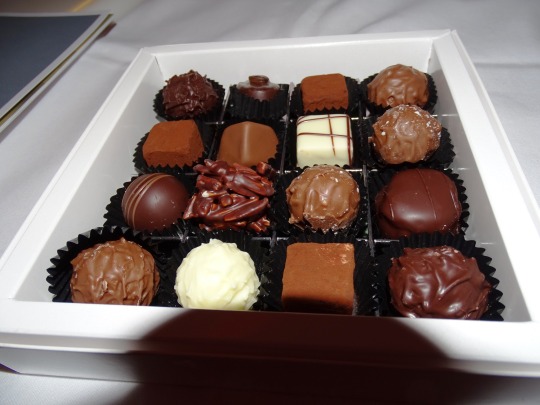
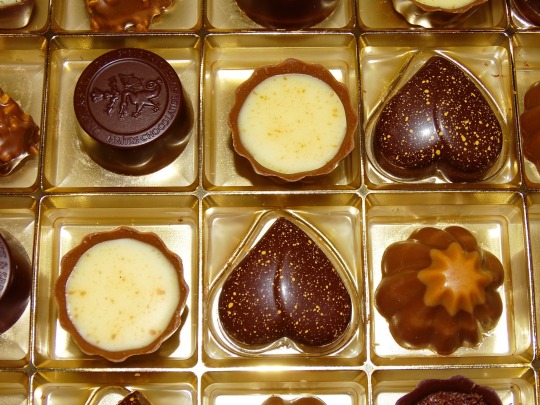
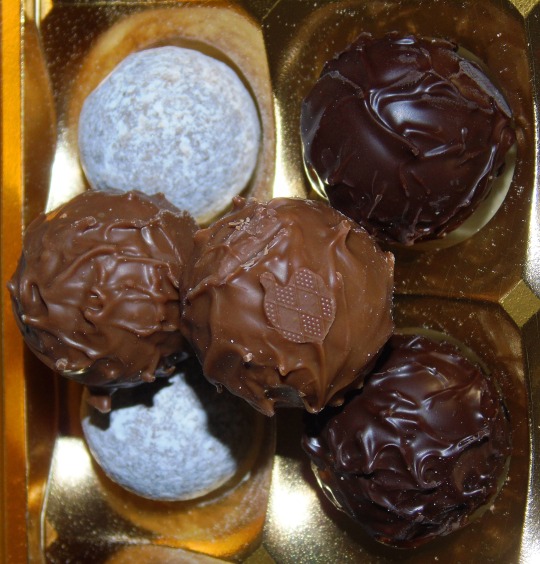


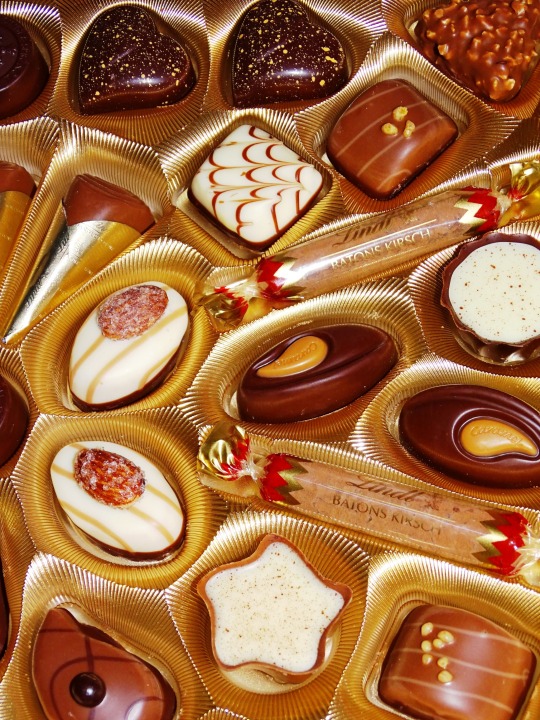






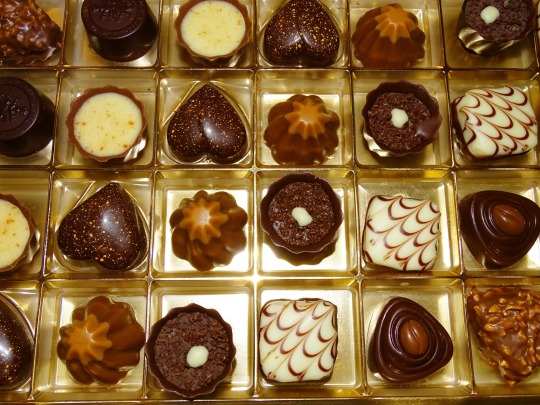
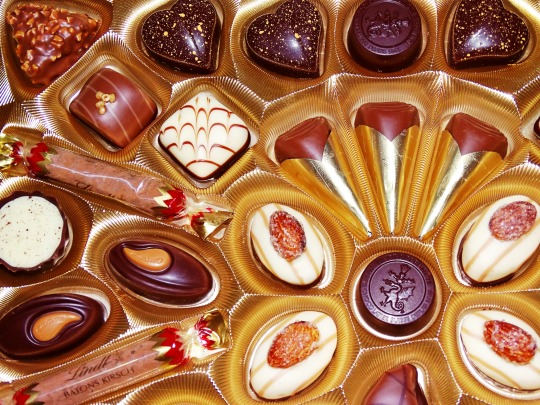
National Milk Chocolate Day
Create yummy desserts, from cake to candy bars, with this light and creamy confectionery on Milk Chocolate Day and enjoy its mood-enhancing effects.
How is milk chocolate different from other chocolates? It’s a mix of cocoa solids and either dry or condensed milk. While dark chocolate is traditionally used as a baking ingredient, this lighter version is used to make chocolate candy bars, hot chocolate, and many other delicious desserts.
Did you know that chocolate actually has mood-enhancing benefits? That’s right—chocolate can make you happy! This is due to the fact that it contains a stimulant called theobromine and a compound called anandamide. Now that’s a reason to celebrate!
History of National Milk Chocolate Day
Daniel Peter, the inventor of milk chocolate, was born in the village of Moudon, located in the Canton of Vaud, in beautiful, mountainous Switzerland in 1836. Peter attended school and graduated there.
Later on in life, Daniel Peter had formed a strong friendship with his neighbor, Henry Nestle, who had settled in Vevey, Switzerland, about 1843. Nestle had developed a process to make baby food in which he used what was then called a “milky flour.” It was at this point in his life that Daniel Peter asked himself the question, “Why not try to make a chocolate containing milk?”
This idea stayed with the young Daniel Peter to the point of becoming an obsession with him. He further realized that in order to stay in the chocolate market, already principally controlled by Caliller, Suchard, Kohler, and others, he must produce a new product that would become
pleasing and desired by the consumer.It should be noted by all that since the early 20th century, the countries of Europe have been producing milk chocolate of varying qualities.
It should also be understood that the development of the process by Daniel Peter was created in the community of Vevey, with the Canton of Vaud, in Switzerland, and further pointed out that the first chocolate process, although not milk chocolate, was also created in Vevey, Switzerland, by Francois Louis Cailler, at the age of twenty-three, upon his return to that community from France and Italy in 1819.
Our research has found that National Milk Chocolate Day was started by the Confectioner’s Association.
Source
Calling all chocolate lovers! National Milk Chocolate Day is celebrated annually on July 28. When solid chocolate is combined with either powdered, liquid or condensed milk; it’s known as milk chocolate. Milk chocolate is the most popular member of the chocolate family and with good reason. It’s creamy, smooth and mostly used in candy bars. It is believed that in the mid-1800s, milk chocolate was first created as a beverage in Germany. The first milk chocolate, in the form of a bar that we all recognize today, was created by Swiss chocolatier Daniel Peter while collaborating with Henri Nestlé, the founder of his Nestlé chocolate company. So if you’re a true chocoholic, get ready to celebrate all things milk chocolate!
National Milk Chocolate Day timeline
1900 B.C.Chocolate is Created
The Olmec, one of the earliest civilizations in Latin America, turns the cacao plant into chocolate.
1689Hans Sloane Popularizes Chocolate Milk
While in Jamaica, Irish physician Hans Sloane adds milk to the ‘chocolate water’ to make it taste better and he brings his discovery back to England.
1828Van Houten Invents Cocoa Pressing
The Van Houten company in Amsterdam invents the cocoa pressing method to produce a light, fluffy chocolate powder that can be easily dissolved in water or milk.
1876What a Concoction!
Swiss chocolatier Daniel Peter adds dried milk powder to chocolate to create milk chocolate.
National Milk Chocolate Day Activities
Eat a candy bar
Bake a cake
Drink your chocolate
Since it's National Milk Chocolate Day, your task is a delicious one. Grab your favorite milk chocolate candy bar and enjoy. With so many mouth-watering choices like caramel, coconut or cookie nugget — take your pick. Then, spend some time licking the melted good stuff off your fingers.
During the Victorian era, baking a cake was expensive because sweet ingredients like sugar, chocolates and exotic fruits, were considered as luxuries. Only the nobility and the upper middle class could afford cakes for birthdays, weddings or holidays. As prices dropped, every special occasion included a cake, ideally made out of milk chocolate and stacked in multiple layers.
No kids allowed. Dessert cocktails are perfect when you’re having a chocolate craving. They’re rich, creamy and made to satisfy that sweet tooth. Your favorite alcoholic beverage can be a perfect complement to milk chocolate.
Why We Love National Milk Chocolate Day
It’s the perfect ingredient
It's sweet yet adaptable
Don't believe the negative hype about milk chocolate not being nutritious
Nothing gets us more excited to bake than the idea of whipping up a milky, chocolaty dessert when we're done. Whether the recipe uses milk chocolate chips or a milk chocolate bar, a chocolate craving provides the perfect excuse to create a decadent, totally self-indulgent treat. Chocolate pudding, chocolate chip cookies, brownies, a triple-layered cake, whatever, just as long as the main ingredient is milky, silky, chocolate. Don't forget to lick the bowl!
We all know you can eat the sweet treat but did you know there are other uses for it, too? Milk chocolate is sometimes used in products for hair and skin care because it contains little-known ingredients that are beneficial to your skin. The level of antioxidant compounds in cocoa is higher than that of green tea, black tea or red wine.
Ok, so the nutritional benefits of milk chocolate are not as extensive as those found in dark chocolate. But milk chocolate still has a lot going for it. For example, milk chocolate gives you stamina because it stimulates your brain and your emotions. Also, eaten in moderation, milk chocolate gives our bodies the fat we need in our daily diet.
Source
#Sprüngli Pralines#I only eat Swiss chocolate#Swiss chocolate is the best#Lindt & Sprüngli#Lindt#Chocolat Frey#Lindt CONNAISSEURS#Lindt PRALINÉS DU CONFISEUR#Lindt TRUFFES#truffles#food#snack#original photogrpahy#National Milk Chocolate Day#NationalMilkChocolateDay#28 July#close up#detail#travel#original photography
1 note
·
View note
Text
History of cholate
History of Chocolate
Chocolate did not exist in the 16th century. Until then, it only existed in Mesoamerica but in a different form as we know today.
In 1900 BCE, the individuals from that regions had learned to prepare the beans of the native cacao tree.
In the earliest records we have so far, the beans were ground and then mixed with cornmeal and chilli peppers to create a drink, a bitter, and invigorating concoction overflowing with foam.

Back then the Mesoamericans believed that cacao was a heavenly food gifted to humans by a feathered serpent god, also known to the Maya as Kukulkan and to the Aztecs as Quetzalcoatl.
The Aztecs used the cacao beans as a form of currency, and drank chocolate at royal feasts, and it was given to soldiers as a reward for success in battle, and also used it in rituals.
Then in 1519 the first transatlantic chocolate encounter occurred when Hernan Cortes from Spain visited the court of Moctezuma at Tenochtitlan.
In a record of Cortes’s lieutenant, the king had 50 jugs of the drink brought out and poured into golden cups.
When the colonist s returned with shipments of the new bean.
When it reached the country the missionaries’ indecent accounts of native customs gave it a reputation as an “aphrodisiac” (a food, drink or other thing that stimulates sexual desire).
At first its bitter taste made it suitable as a medicine for a minor illness (ailment), like stomachs ache, but with the sweetening with honey, sugar, or vanilla, soon made chocolate a popular delicacy in the Spanish Court; then in the 1600s no aristocratic home was complete without a dedicated chocolate ware.
The fashionable drink was difficult and time consuming to produce on a large scale, they required using plantations and imported slave labour in the Caribbean and on islands off the coast of Africa. In the 1700s – 1800s.

In 1828 was when the world of chocolate would change forever till today.
With the introduction of the cocoa press by Coenraad van Houten of Amsterdam, Van Houten’s invention could separate the cocoa’s natural fat, or cocoa butter; which left a powder that could be mixed into a drinkable solution or recombined with the cocoa butter to create the solid chocolate we know today.
Not long after, a Swiss chocolatier name Daniel Peter, added powdered milk to the mix, inventing milk chocolate.
By the 20th century, 1900s to be exact, chocolate was no longer an elite luxury but had become a treat for the public, which required huge amounts of cocoa to be cultivated to meet the massive demands which can only grow near the equator.
Instead of African slaves being shipped, the South American cocoa plantations, the production itself would shift to West Africa.
With Cote d’Ivoire providing two fifths of the world’s cocoa as of 2015.
With the growth of the industry, the abuse of human rights become more horrifying.
Many of the plantations throughout West Africa supplied to Western companies, using slave and child labour, with an estimation of more than 2 million children affected.
History and facts about chocolate and the Aztecs
The Cocoa bean exchange rate was:
4 beans = 1 pumpkin
10 beans= 1 rabbit
10 beans = lady to stay overnight
The Aztecs Rise to Power:
By 1400w AD, the Mayan power was decreasing. The Aztecs ruled the highlands of central Mexico, far from the rainforests of the Mayans.
The Aztecs could not grow their own cocoa, they had to trade the beans and they also had their own word for chocolate: chocolatl which is pronounced ‘cho co LA til’, which was similar to the Mayan word xocolatl.
Money Grew On Trees:
As far as the Aztecs concern, money really did grow on trees as the Cocoa beans were very valuable, the Aztecs used them as money, and were very protective of their beans.
They use it to pay for food, clothes, taxes, gifts and as offerings to their gods.
Chocolate different uses across the world:
· In ancient Maya, Central America used chocolate as a spicy drink and was also used in royal and religious ceremonies.
· Mayans used chocolate only for drinking and was the only way to consume cacao for over 1000 years.
· In Mexico is still used as a beverage. Champurrada, is a chocolate corn drink and the Mexican hot chocolate.
· In Britain, the Warwick Innovative Manufacturing Research Centre used waste chocolate and vegetable oil to make an environmentally friendly formula three car.
· The Cocoa beans were also used as medicine to treat minor illnesses
· In Italy instead of Easter eggs hunts, and jelly bears, they have big, some massive chocolate eggs. They are usually wrapped and fill the windows all over the country. They are considered Italy’s food gift of choice around Easter time. From my childhood I remember we used to call ‘Uova di Pasqua’ the best made for them was Kinder and there were loads of companies producing them, and for kids the biggest excitement was the toys you’d find inside the egg.
· Irelands Tayto is a chocolate bar infused with their famous cheese and onion crisps.
Effects of Chocolate on the brain
Chocolate contains compounds similar to those found in ecstasy, morphine and marijuana but the compounds are relatively small that is why chocolate is not sold behind pharmacy counters.
Chocolate can also affect our mood as it improves it.
Dark chocolate stimulates the production of endorphins, chemicals in the brain that create feelings of pleasure.
Dark chocolate also contains serotonin, an antidepressant that can elevate mood so it can be good for your mental health and lower the risk of heart disease as it does not contain sugar.
http://www.godivachocolates.co.uk/milk-chocolate-2
https://www.godivachocolates.co.uk/the-history-of-chocolate-mayans-aztecs.html
Here is just a picture with the original layout, fonts and colours used when I did this research as tumblr is limited for fonts.

4 notes
·
View notes
Text
Chocolate during Industrial Revolution
The 19th century was a time of increased production and manufacturing due to the Industrial Revolution. It also increased demands from countries that produced raw goods such as the colonies in the Americas that produce cacao, tobacco, and sugar. Europe was import these and manufacture more expensive goods to sell to their people or back to the colonies.
Prior to mechanization of production, chocolate would usually be produced at roughly 10 kgs per day. With the technological advancements of the Industrial Revolution, that number skyrocketed to 500 kgs per day! An astronomical jump seems like a good thing for everyone! But this increased demand for materials also increased demand for labor. The labor increase would also want quicker cultivation which leads to harsher working conditions. So, while the rich get richer, the poor get poorer and live in worse conditions.
The cacao press, made in 1828 by Conrad van Houten, was invented due to the high fat content of cacao. The cacao press was able to extract the butter from the bean to reduce the content to about 27 percent rather than 50. The resulting cacao cake is easier to powder. He also used alkaline salts to remove the bitter taste and make the powder much more soluble.
Adding sweeteners to chocolate became the common practice but was much more difficult to do with the solid chocolate than it was with the beverage. Phillipe Suchard created the Melangeur in 1830 which allowed the mixing of chocolate with other substances to be much easier, resulting in a smoother solid chocolate.
The push for solid chocolate began to grow further! Joseph Fry created the first chocolate bar in 1848 with the aid of van Houten’s cacao press. Instead of using water, Fry’s company used melted cacao butter added onto the cacao powder and sugar resulting in a smoother paste than can be cast into a mold. They made chocolate bars this way. The chocolate was still rather bitter, and further innovations were to come.
Daniel Peter wanted to make sweeter chocolate bars. The issue Fry had with his bar was that the use of water resulted in it all evaporating away, so he used melted cacao butter. Daniel Peter knew milk makes it sweeter, but the high-water content would result in evaporation too. Milk also make the chocolate go rancid quicker and had a short shelf life. He went to Henry Nestle, a pharmacist that was experimenting with evaporated cow milk, to develop a candy bar. Peters used Nestle’s dehydrated condensed milk with the cacao solids and was successful in creating a sweeter and smoother chocolate bar. Since the milk was dried, the shelf life was longer than it would have been with regular milk. This chocolate bar is largely what we still see today!
Despite all the advancements with the cacao press, chocolate was still lumpy and grainy. Rudolph Lindt developed a conching machine in 1879 which processed the beans for hours to create smooth and silky chocolate. Conching is the process of rolling the chocolate liqeuer till it reaches a desired smoothness. This resulted in a smoother chocolate that was ideal for cakes and other baked goods.
Three families dominated the chocolate production in the UK: Fry, Cadbury, and Rowntree. Cadbury started in 1824 and created fancy chocolate boxes (heart shaped box for Valentine’s Day), they modern concept of the Easter egg, and Dairy Milk chocolate. They moved their factory from Birmingham to Bourneville and built a utopian company town that was inspiration to that of Hershey. In 2009, Kraft had acquired Cadbury into its company. Rowntree company began in the 1860s and most famously developed the Kit Kat bar. It was purchased by Nestle in the 1980s.
In the US, the three big companies of chocolate were: Baker’s Chocolate, Ghirardelli, and Hershey. Baker’s Chocolate was founded in 1764 in Massachusetts till it was acquired by Kraft foods in 1989.
The technological innovation made chocolate mass produced and cheaper to consume worldwide. Chocolate had become more democratized and the rise of chocolate had began to peak.

Sources: Grivetti, Louis Evan, Howard-Yana Shapiro, and Rodney Snyder. “From Stone Metates to Steel Mills.” In Chocolate: History, Culture, and Heritage, 611–23. Hoboken. N.J.: Wiley, 2009. https://doi.org/10.1002/9780470411315.
0 notes
Photo

Chocolate Factory: Modern Manufacturing
Closely approaching the industrial, chocolate was seen more and more as an elite only food. Since the process for making chocolate was expensive, it was seen as luxurious and expensive. Chocolate once labeled as medicine, is now seen as a luxurious treat that only the elite could indulge in, reinforcing a hierarchy. It had lost all symbolic meaning to the Gods that Mesoamericans had once crafted. There were, however, new connotations for chocolate: it was seen as a female indulgent, aphrodisiac nature, and had malignant purposes.
Just before the industrial revolution, they were using archaic methods to mass produce chocolate. When preparing the beans, they would ferment and dry them. While making the cacao liquor/paste, they would roast, winnow, and grind making it very tedious. When making the chocolate, they would mix the paste with spices and other liquids. The Industrial Revolution had finally touched ground beginning in Great Britain, lasting from the 1760s to the 1850s. There were new manufacturing processes, more efficient use of energy, and better transportation. Along with manufacturing, there were new social changes such as new consumption patterns. The industrial revolution also allowed for global changes. Industrialized countries were better at production of manufactured goods, so they looked towards Latin America, who was much better equipped for production of raw materials. This was known as the Export- Import Model; this allowed for a much closer relationship with Europe and Latin America.
Modern manufacturing began to take shape. C. Van Houten had invented the Cacao Press in 1828. Before the invention, the problem with cacao was it had a very high percentage of fat content being at 50%. It would make the beverage very thick and difficult to make into solid form; the excess had to be skimmed off the top or had to be absorbed with arrow root, potato starch, or corn flour. With his invention, it could separate cacao butter from cacao solids. According to Snyder the process of separating the cacao butter from the solids was: “...mixed water into the liquor to form a stiff paste, which was packed into cloth bags. As the bags were pressed, the cloth retained the cocoa solids while the fat pressed through the cloth” (Snyder, 614). It used a process called Dutching that used alkaline salts, allowing the removal of the bitter taste and made it much more water soluble. The fat that the cacao left behind had been reduced to 27%.
Phillipe Suchard, who created the Melangeur in 1830. The problem with adding substances to chocolate, is they would have to ground sugar and cacao powder until it created a smooth paste. The innovation was a chocolate mixer; it consisted of heated granite plate and several rollers moving forward and backward, using hydraulic powder power. The results yielded was smoother chocolate when mixed with other ingredients.
Joseph Fry created the chocolate bar in 1848. This innovation was it used the leftover material from the chocolate making process by blending cacao powder and sugar into melted cacao butter.
Daniel Peter created Milk chocolate in the 1870s. when creating milk chocolate, it would become rancid because the milk would not blend into the water; it would make it shrink, separate, and disintegrate. He would use Henri Nestle’s powdered milk in the chocolate. It allowed for extended shelf life, a sweeter bar that is now the modern chocolate bar.
Finally, Rudolph Lindt created the conching machine in 1879. Before the innovation, the chocolate was very grainy and lumpy; with his invention, it allowed for the chocolate to be kneaded. It processed the beans for hours creating a smooth consistency. Today, the process is different and much easier thus producing much more chocolate, comparable to the Industrial Revolution.
The Quakers took hold of the chocolate industry, why? They were persecuted, banned from universities, barred from mainstream professions, and they were not eligible to hold public office. It would only make sense that they would pursue chocolate as the other avenues, they were barred from entering. They had very little opportunities to make money, however, they did could have business, commerce, and medicine. Since chocolate had medicinal properties, they too the opportunity to market off of chocolate. They wanted to persuade the poor to give up alcohol because it led to high violence and destruction of families, so they wanted the people to consume more chocolate.
There was mass production in the UK because of these new innovations. Cadbury was a major brand created in 1824. They created many products such as: cacao essence, chocolate boxes, easter eggs, dairy milk chocolate, and Bourneville cacao. In 1919, they purchased Fry’s company. Rowntree was created in York in the 1860s. they created fruit pastilles, the Van Houten press, and their breakthrough products being Aero, Kit Kat, and the dairy box. Mass production in the US consisted of Baker’s chocolate created in 1764 by John Hannon and John Baker. Later Ghirardelli and Hershey became the next big names in chocolate.
With the Industrial Revolution, chocolate had evolved immensely. There were many things wrong with how chocolate was being produced and with the new inventions created, they chocolate was reinvented. The biggest staple chocolate item that came out of the industrial revolution was the creation and perfecting of the chocolate bar. These inventions would allow the production of chocolate to skyrocket, making the price of chocolate low, allowing anyone to purchase, losing all symbolism of wealth.
#https://chocolateclass.wordpress.com/2016/03/11/industrial-revolution-did-chocolate-contribute-to-obesity/#industrial revolution and the manufacturing of chocolate
0 notes
Text
Mass Consumption of Chocolate and its Changes
The industrial revolution was a response to the mass consumption because more people were able to purchase goods for themselves and their family. Chocolate had a major transformation during the industrial revolution because there was a new demand for chocolate, but the supply was not meeting the demand. Chocolate during the Industrial Revolution became a common sweat for people and it also came in various forms. As a result, people had to find new forms that would make the production of cacao faster in order to meet the demand. As new machinery came out to fasten the production of cacao, there was also new forms of how chocolate can be consumed. As mass consumption of chocolate increased across the globe, many chocolate companies tried to create a unique style of how their chocolate was consumed, and companies were able to that in part because of the inventions during the industrial revolution.
Before the industrial revolution the old forms of how cacao was produced and harvested was a long procedure and their form of producing cacao would have been unable to meet the demand. One of the most important machines invented for cacao production was by Van Houten machine in 1828 in which cacao fat would be reduced. Cacao had a fat content of 50%, but after the machine was invented it would be reduced to about 27%. The reduced fat would be beneficial for the mass consumption as the remaining cacao fat would be transformed into a powder which would be purchased by the public. “The reduced-fat cacao solids were then milled into cacao powder. Ghirardelli’s survival as a company after its bankruptcy of 1870 was attributed to the sales of its Broma cacao power” (Snyder, 614). The creation of Van Houten helped save the Ghirardelli’s company as the powder produced by the company was a major success which helped revive the company during its struggling years.
As the forms of how chocolate improved there was a surplus of chocolate and as a result, companies were given the opportunity to develop new forms of how they could sell chocolate. There was various ways in how chocolate became manufactured after there was a surplus. One of the most successful inventions was chocolate milk. Chocolate milk became a major seller because of the nutritional value that it contained. In Europe, Nestlé was trying to find a way in which milk would be able to get better preserved, so that the shelf life was longer. “While working on a method of preserving milk, Nestlé had developed powdered milk” (Snyder, 616). The development of chocolate mixed with powdered milk revolutionized chocolate milk because it meant that it was a great tasting beverage with a lot of nutritional value and now it was going to last longer in the shelfs. The introduction of powdered milk also introduced the modern chocolate bar and the chocolate was sweeter as a result of the powdered milk.
As the mass consumption of cacao increased, they needed to invent new forms of how to produce and harvest cacao beans. Once they achieved the ability to have a surplus of chocolate they decided to experiment with chocolate. Many of the inventions are the types of chocolate products that are consumed today. It was also during the industrial revolution in which chocolate became a sweat for the common person across globe as it lost its appearance as a food for the wealthy. The industrial revolution did chocolate well because it introduced machinery that fasten the production of chocolate at a great rate and the industrial revolution opened the ability to have new forms of how chocolate can be consumed. Many of the inventions created for cacao during the industrial revolution whether it be machine or a food with chocolate are still being used in today’s society.
Rodney, Snyder. “From Stone Metates to Steel Mills.” 2008. PDF file.

Van Houten and his Chocolate Press
http://musingsfrommarsh.blogspot.com/2012/02/hearts-chocolates-rosesoh-my.html

The Ways of how Cacao was Prepared Before the Industrial Revolution
http://sweetmatterphysicist.com/tree-to-bar-basics/
0 notes
Text
Chocolate - Food of the Gods
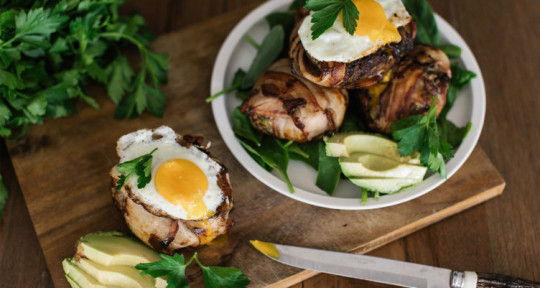
Chocolate has a history of sweetness and violence. The Mayans, the first ones to discover the cacao plant, are credited with perfecting this concoction in its earliest form. Even dedicating a god to Cacao.
The ever-conquering Aztecs also conquered the Mayans. They quickly learned to love the taste and the health benefits associated with this dark beverage.
'The divine drink, which builds up resistance and fights fatigue. A cup of this precious drink (cocoa) permits a man to walk for a whole day without food.' Montezuma - Aztec Emperor (c. 1480-1520)
Both the Mayans and the Aztec recognized the cocoa plant and beans as being very valuable even using it as a means of money exchange. The Spaniards seeing the value the Aztecs placed upon the cacao plant became very interested in the plant also.
It did take time for the Spaniards to gain a liking for the dark drink that they saw "more a drink for pigs than a drink for humanity."
Within no time the Spaniards began shipping the beans back to Spain. And there began the modern history of Chocolate.
At first the only Europeans able to afford this new beverage was the aristocracy. They didn't consume it in the same methods as the Aztec but preferred to drink it hot and sweet.
They were also the first to begin to add other spices from the new world.
Once they found that by adding sugar the flavor improved, the love for this new drink spread rapidly.
This also meant they needed to produce more. They began experimenting with different cocoa plants. Finally they found one, which although inferior in quality and taste, could produce a much larger quantity.
They found that by adding a few extra teaspoons of sugar that most Europeans couldn't notice a difference in quality.
In the Americas the slave trade facilitated the growth nicely and the trade grew rapidly.
Once slaves were outlawed in the Americas the plants were brought to Africa to be grown.
Historical dates
1828- "Dutching" or making cocoa into a powder to mix with water, was invented by Dutchman Coenraad Van Houten
1850's- Solid Chocolate - Created by a famous English chocolatear Joseph Fry. By mixing sugar, cocoa powder and cocoa butter you could create a paste that when it cooled became a solid.
1879- In Switzerland it was discovered that by adding powdered milk to chocolate it became more affordable and milder. Suddenly people from all economic reaches could afford the heavenly substance.
Health benefits
The Mayan and Aztec always recognized the health benefits of chocolate. Interestingly enough it's really only been in recent years that anyone has began any serious study of the cocoa plant.
What makes it healthy?
While cocoa is a powerhouse of nutrients from A-Z (Anandamide-Zink) What it is recognized the most for is it's level of antioxidants, amazingly enough even the poorest quality has some level of antioxidants
What are Antioxidants
Antioxidants are the compounds that help to prevent diseases like the aging, arthritis, strokes, cancers, heart disease and others. These compounds are found in great abundance in fresh fruits and veggies.
These compounds are what give fruit and vegetables their color. In fact the darker the color and the more bitter the taste the higher the level of antioxidants.
Making the dark brown and bitter taste of chocolate in its natural form very high in antioxidants.
I'm sure you've heard of some of the more common antioxidants such as vitamins C and E. Researchers are still trying to identify many of the other ones and how they affect our bodies.
Why do we need Antioxidants?
Antioxidants are our "Anti-Rust" formula.
Much in the same way an apple or banana will turn color once it's exposed to the air, we do the same thing.
As a new baby we begin to take in oxygen and as we do so our body begins to "rust" or rather break down. When we eat foods rich in antioxidants we protect our body much in the same way that pouring lemon juice, a natural antioxidant, over fruit, stops it from turning brown.
Free Radicals
It's these free radicals that you are protecting your body from. Free radicals are molecules "gone wild". They are either missing an electron or have an extra electron. They become scavengers going in search of any other molecule that they can "steal" from. They are looking to neutralize themselves.
This creates a dangerous chain reaction. As one free radical attaches to a healthy cell, that cell then becomes a free radical and begins to scavenger themselves.
If this process goes unchecked then these mutating cells can create diseases. Just to name a few of the more common "free radical" diseases -- memory loss, aging, immune system disorders or even cancer.
Neutralization of Free Radicals-
The goal for our body then should be to neutralize the free radicals, and this is what antioxidants do.
They do this by using one of their carbon atoms, with it's strong bonds. As they are sitting there when a free radical comes along they are able to latch on to the free radical. They are then able to carry the free radical with them out of the body.
This is why it is so important to have a constant supply of high antioxidant foods to help eliminate free radicals from our bodies.
Chocolate, for me personally, is the most delicious way to keep free radicals in check.
Types
There are many varieties of chocolate. Below are a few of the most common varieties and uses.
Cacao vs. Cocoa
Cacao is the industry term used for the tree and fruit. Once the pod is opened the fermenting process begins and the name changes to cocoa, such as cocoa butter cocoa bean etc.
Cacao pods - This is the football shaped fruit that the cacao tree produces. It's about 5-12 inches long and 3-5 inches wide. Within each of these pods you'll find about 30-40 seeds. It takes about 20 seeds to make one pound of cocoa.
Cocoa Beans - The fruit of the cacao tree, found inside the cacao pods.
Nibs- Once the cocoa beans are removed they are left to ferment. This helps to develop the deep flavor and aroma and also helps reduce the bitterness.
Once the fermentation process has taken place the beans are laid out to dry. Once dried the outer shell of the bean is removed. They use a crushing tool to do this which many times crush the seeds into what they call "nibs". Nibs are nothing more than crushed pieces of cocoa
0 notes
Text
Delicious History Of Chocolate
Chocolate
Chocolate is one of the most popular and beloved delights in the world. It is loved in all sorts of shapes and sizes - bars, sweets, chocolate spread, chocolate syrup ... whatever. Everything that is created from chocolate leaves most of us wanting more. But how was this incredible dessert becoming vital? Who was the genius who decided to create it? Chocolate has had an incredible journey throughout our history, ending in modern times where it is still favored among gentle lovers in search of assured satisfaction. The seeds of cacao trees grow naturally in the trees, so it was not long before the ancient populations of Mesoamerica, where it all began, discovered the taste and properties of cocoa. The chocolate began to be consumed like liquid, a drink made of cocoa seeds where spices and even wine were added; giving it a somewhat bitter and not sweet taste that we all know and love. It was believed that this beverage had aphrodisiac properties, a story that still persists today, but has yet to be proven. In the 16th century, primordial chocolate arrived in Europe, where sugar was added to the mixture. The upper classes were consumed at first, but quickly came to the "common" people, who also enjoyed it. The word "chocolate" comes from "chocolatl", which is the classic Nahuatl, the language of the Aztecs. Between the 17th and 19th centuries, chocolate mania developed, Europeans, specifically French, English and Dutch, created colonies and began planting cacao to harvest essential grains. But, during the Industrial Revolution, the chocolate began to have the form and the flavor that we now know. In 1815, Coenraad van Houten, a Dutch chemist, decided to incorporate alkaline salts into the chocolate composition. This process actually diminished their initial bitterness. In 1828, the chemist created a special press that managed to remove about half the content of chocolate butter, which helped him achieve a more consistent quality. From then on, it was just one more step for the creation of modern chocolate. In 1847, Joseph Fry took the "Dutch cacao" pressed, as it was called, and added the melted cocoa butter, creating a more malleable form of chocolate. And in 1879 Rodolphe Lindt, the creator of the chocolate of the same name, brought the finishing touch to modern chocolate with his shell machine, which improved the flavor and texture of the chocolate by mixing the chocolate evenly with the cocoa butter. Still, chocolate drinks were still popular, with milk added since the 17th century, to improve their flavor. But it was in 1875 when milk chocolate appeared, with Daniel Peter mixing powdered chocolate liqueur, created by Henri Nestlé.
Delicious History Of Chocolate Health and food from hellolife17 http://ift.tt/2fFzv1k via IFTTT
0 notes
Text
Cocoa Market to expand at a CAGR of 3.4% through 2016-2026
Cocoa liquor sub-segment likely to surpass cocoa powder sub-segment in terms of value share in the coming decade, owing to an increase in demand for cocoa liquor
Cocoa powder falls under both conventional and organic categories. In 2016, the cocoa powder sub-segment in the conventional category was estimated to account for a market value share of more than 30% in the global cocoa market. This segment is anticipated to witness a slight drop in market value share and be valued a little less than 35% by the end of the forecast period. The cocoa liquor sub-segment in the conventional category is expected to be the most attractive sub-segment in the global cocoa market over the forecast period, registering a CAGR of 4.3% in terms of value during the forecast period.
In 2016, the cocoa powder sub-segment in the organic category was anticipated to hold a meagre market share of a little over 18%, while the cocoa liquor sub-segment in the organic category was projected to hold the highest market share of 45%. The cocoa liquor sub-segment in the organic category is expected to remain dominant throughout the forecast period.
Request For Sample@ http://www.futuremarketinsights.com/reports/sample/rep-gb-2961
Rising demand for chocolates and cocoa brownies is anticipated to boost the growth of the cocoa powder sub-segment
Cocoa powder is an essential ingredient used to make a variety of dark chocolates, thus increasing the popularity of dark chocolates across the globe, especially in developing countries. This is driving the growth of the cocoa powder sub-segment in the global cocoa market. Rising awareness among adult consumers across the globe regarding the various health benefits associated with dark chocolate has been contributing to the growth in consumption of chocolates made of cocoa powder. Another factor creating robust development in the cocoa powder sub-segment is an increasing inclination of young consumers towards chocolate. Primary consumers of chocolate are children, but as per the current scenario, chocolate is gaining popularity amongst young adults, as it helps in lowering cholesterol, which is helpful in maintaining fitness and promoting muscle building. The demand for cocoa powder in various food applications has been increasing since the last few years. Demand for packaged premium quality cocoa powder based products such as cookies, chocolates, chocolate coated fruits, and caramelised chocolates for occasions such as New Year, Christmas, birthdays, and weddings is increasing rapidly. This is another major factor expected to boost the growth of the cocoa powder sub-segment of the global cocoa market over the projected period.
Revenue contribution from the Western Europe cocoa market to the global cocoa market is likely to remain comparatively high throughout the forecast period
The cocoa market in Western Europe was anticipated to represent a relatively high value share of almost 35% by 2016 end, and is expected to remain the dominant regional market over the forecast period. An increasing demand for cocoa in the conventional sub-segment in Western Europe is expected to fuel growth of the cocoa market in this region. The Western Europe market is projected to gain 233 BPS by 2026 end over 2016. The cocoa market in North America is likely to witness substantial growth in terms of value throughout the forecast period. North America followed Western Europe closely in terms of market share in 2016, with a projected value share of over 20%. The North America cocoa market is anticipated to gain 23 BPS by 2026 end over 2016. In terms of CAGR, the Western Europe cocoa market is estimated to register the highest value CAGR of 4.1% with North America standing at the second position with 3.5% value CAGR.
Send An Enquiry@ http://www.futuremarketinsights.com/askus/rep-gb-2961
Swiss chocolate manufacturer The Barry Callebaut Group opens first ever cocoa powder based beverage products academy
Switzerland based chocolate manufacturer The Barry Callebaut Group opened its first cocoa powder based beverage products academy in 2016 – Van Houten Beverage, Sweden – to enter into this business segment. In 2016, U.S based Cargrill Incorporated introduced cocoa powder with intense dark red colour in its product offerings in Indonesia for application in chocolate ice-creams, drinks, and desserts. Another U.S. based manufacturer, Carlyle Cocoa has acquired speciality in manufacturing six different cocoa powder varieties differentiated on the basis of pH range, while the rest of the ingredients remain the same.
0 notes
Text
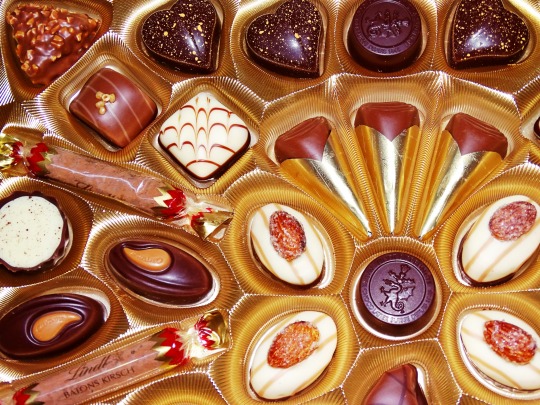
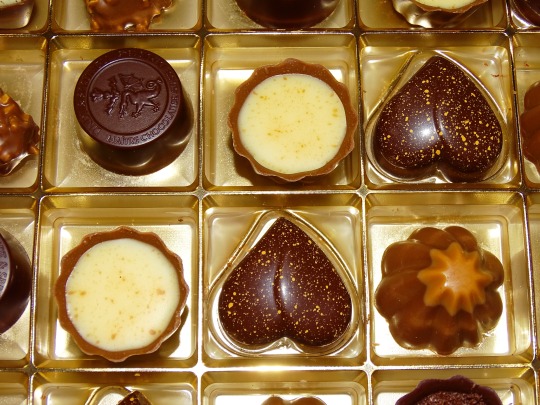
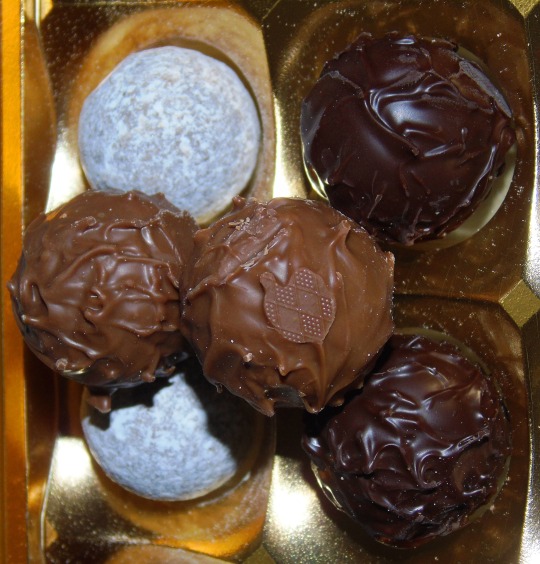
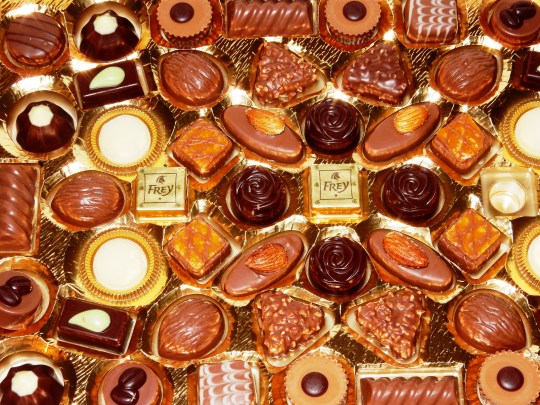
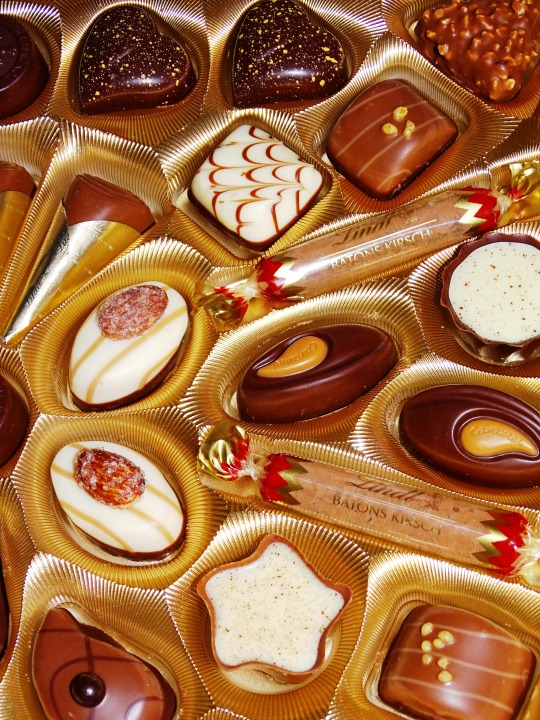
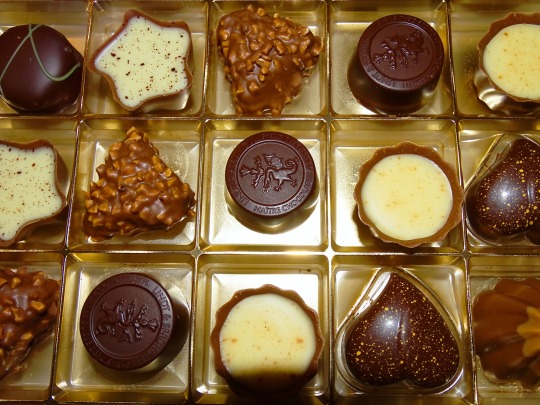
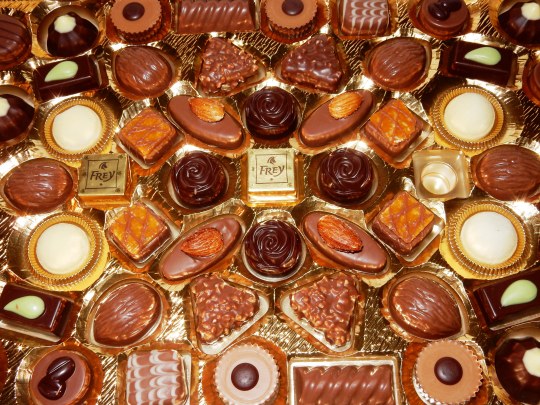
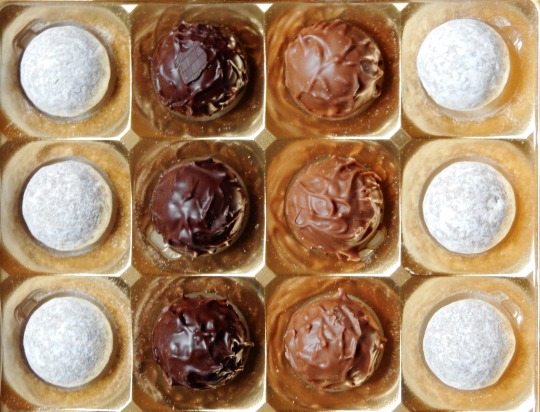
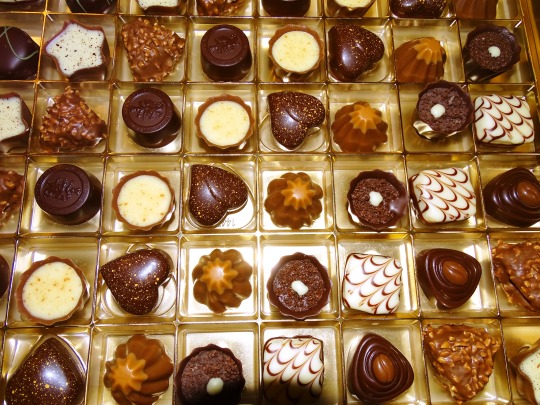
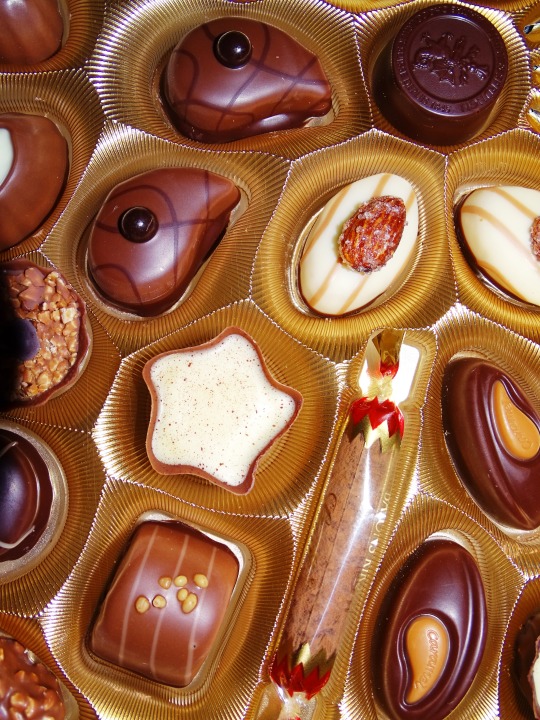
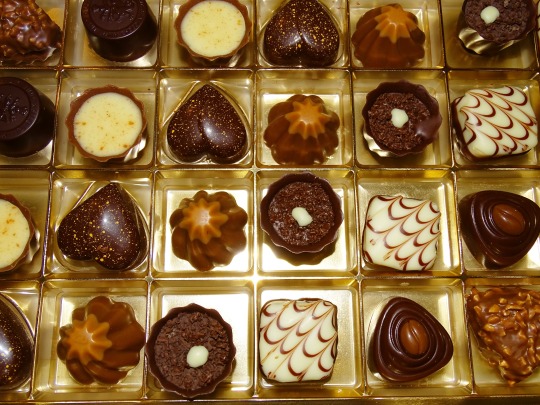
National Milk Chocolate Day
Create yummy desserts, from cake to candy bars, with this light and creamy confectionery on Milk Chocolate Day and enjoy its mood-enhancing effects.
How is milk chocolate different from other chocolates? It’s a mix of cocoa solids and either dry or condensed milk. While dark chocolate is traditionally used as a baking ingredient, this lighter version is used to make chocolate candy bars, hot chocolate, and many other delicious desserts.
Did you know that chocolate actually has mood-enhancing benefits? That’s right—chocolate can make you happy! This is due to the fact that it contains a stimulant called theobromine and a compound called anandamide. Now that’s a reason to celebrate!
History of National Milk Chocolate Day
Daniel Peter, the inventor of milk chocolate, was born in the village of Moudon, located in the Canton of Vaud, in beautiful, mountainous Switzerland in 1836. Peter attended school and graduated there.
Later on in life, Daniel Peter had formed a strong friendship with his neighbor, Henry Nestle, who had settled in Vevey, Switzerland, about 1843. Nestle had developed a process to make baby food in which he used what was then called a “milky flour.” It was at this point in his life that Daniel Peter asked himself the question, “Why not try to make a chocolate containing milk?”
This idea stayed with the young Daniel Peter to the point of becoming an obsession with him. He further realized that in order to stay in the chocolate market, already principally controlled by Caliller, Suchard, Kohler, and others, he must produce a new product that would become
pleasing and desired by the consumer.It should be noted by all that since the early 20th century, the countries of Europe have been producing milk chocolate of varying qualities.
It should also be understood that the development of the process by Daniel Peter was created in the community of Vevey, with the Canton of Vaud, in Switzerland, and further pointed out that the first chocolate process, although not milk chocolate, was also created in Vevey, Switzerland, by Francois Louis Cailler, at the age of twenty-three, upon his return to that community from France and Italy in 1819.
Our research has found that National Milk Chocolate Day was started by the Confectioner’s Association.
Source
Calling all chocolate lovers! National Milk Chocolate Day is celebrated annually on July 28. When solid chocolate is combined with either powdered, liquid or condensed milk; it’s known as milk chocolate. Milk chocolate is the most popular member of the chocolate family and with good reason. It’s creamy, smooth and mostly used in candy bars. It is believed that in the mid-1800s, milk chocolate was first created as a beverage in Germany. The first milk chocolate, in the form of a bar that we all recognize today, was created by Swiss chocolatier Daniel Peter while collaborating with Henri Nestlé, the founder of his Nestlé chocolate company. So if you’re a true chocoholic, get ready to celebrate all things milk chocolate!
National Milk Chocolate Day timeline
1900 B.C.Chocolate is Created
The Olmec, one of the earliest civilizations in Latin America, turns the cacao plant into chocolate.
1689Hans Sloane Popularizes Chocolate Milk
While in Jamaica, Irish physician Hans Sloane adds milk to the ‘chocolate water’ to make it taste better and he brings his discovery back to England.
1828Van Houten Invents Cocoa Pressing
The Van Houten company in Amsterdam invents the cocoa pressing method to produce a light, fluffy chocolate powder that can be easily dissolved in water or milk.
1876What a Concoction!
Swiss chocolatier Daniel Peter adds dried milk powder to chocolate to create milk chocolate.
National Milk Chocolate Day Activities
Eat a candy bar
Bake a cake
Drink your chocolate
Since it's National Milk Chocolate Day, your task is a delicious one. Grab your favorite milk chocolate candy bar and enjoy. With so many mouth-watering choices like caramel, coconut or cookie nugget — take your pick. Then, spend some time licking the melted good stuff off your fingers.
During the Victorian era, baking a cake was expensive because sweet ingredients like sugar, chocolates and exotic fruits, were considered as luxuries. Only the nobility and the upper middle class could afford cakes for birthdays, weddings or holidays. As prices dropped, every special occasion included a cake, ideally made out of milk chocolate and stacked in multiple layers.
No kids allowed. Dessert cocktails are perfect when you’re having a chocolate craving. They’re rich, creamy and made to satisfy that sweet tooth. Your favorite alcoholic beverage can be a perfect complement to milk chocolate.
Why We Love National Milk Chocolate Day
It’s the perfect ingredient
It's sweet yet adaptable
Don't believe the negative hype about milk chocolate not being nutritious
Nothing gets us more excited to bake than the idea of whipping up a milky, chocolaty dessert when we're done. Whether the recipe uses milk chocolate chips or a milk chocolate bar, a chocolate craving provides the perfect excuse to create a decadent, totally self-indulgent treat. Chocolate pudding, chocolate chip cookies, brownies, a triple-layered cake, whatever, just as long as the main ingredient is milky, silky, chocolate. Don't forget to lick the bowl!
We all know you can eat the sweet treat but did you know there are other uses for it, too? Milk chocolate is sometimes used in products for hair and skin care because it contains little-known ingredients that are beneficial to your skin. The level of antioxidant compounds in cocoa is higher than that of green tea, black tea or red wine.
Ok, so the nutritional benefits of milk chocolate are not as extensive as those found in dark chocolate. But milk chocolate still has a lot going for it. For example, milk chocolate gives you stamina because it stimulates your brain and your emotions. Also, eaten in moderation, milk chocolate gives our bodies the fat we need in our daily diet.
Source
#I only eat Swiss chocolate#Swiss chocolate is the best#Lindt & Sprüngli#Lindt#Chocolat Frey#Lindt CONNAISSEURS#Lindt PRALINÉS DU CONFISEUR#Lindt TRUFFES#truffles#food#snack#original photogrpahy#National Milk Chocolate Day#NationalMilkChocolateDay#28 July#close up#detail
0 notes
Photo

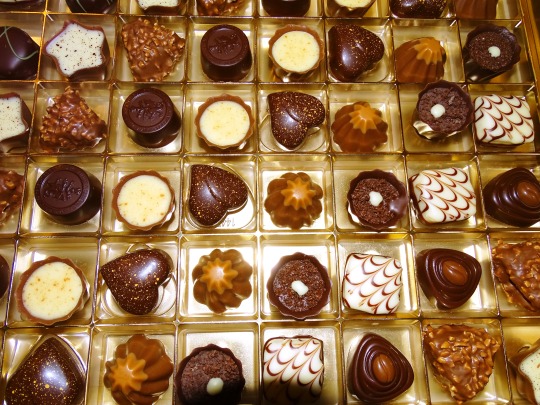


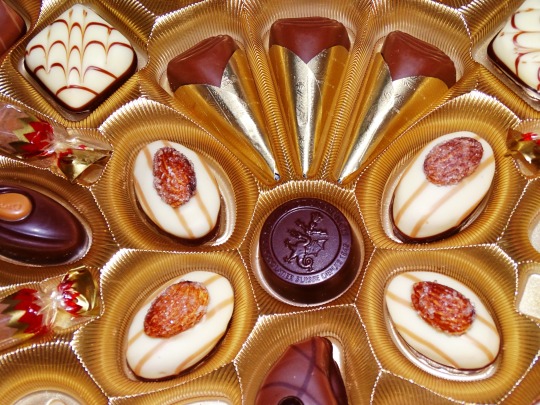
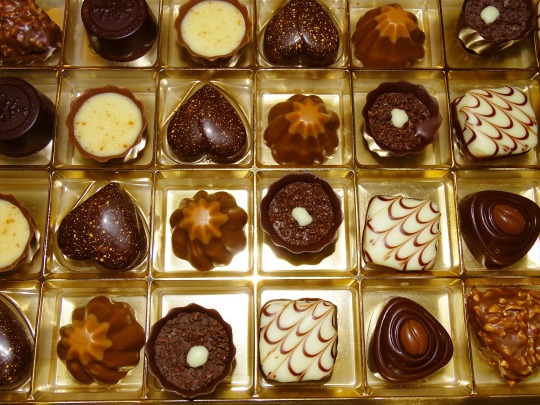

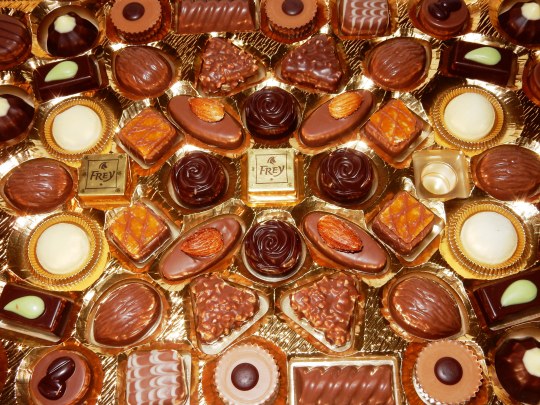

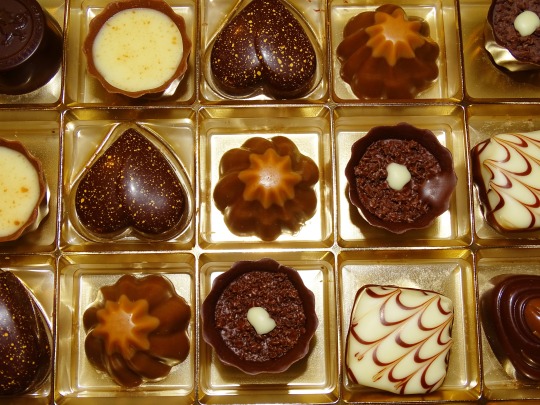
National Milk Chocolate Day
Create yummy desserts, from cake to candy bars, with this light and creamy confectionery on Milk Chocolate Day and enjoy its mood-enhancing effects.
How is milk chocolate different from other chocolates? It’s a mix of cocoa solids and either dry or condensed milk. While dark chocolate is traditionally used as a baking ingredient, this lighter version is used to make chocolate candy bars, hot chocolate, and many other delicious desserts.
Did you know that chocolate actually has mood-enhancing benefits? That’s right—chocolate can make you happy! This is due to the fact that it contains a stimulant called theobromine and a compound called anandamide. Now that’s a reason to celebrate!
History of National Milk Chocolate Day
Daniel Peter, the inventor of milk chocolate, was born in the village of Moudon, located in the Canton of Vaud, in beautiful, mountainous Switzerland in 1836. Peter attended school and graduated there.
Later on in life, Daniel Peter had formed a strong friendship with his neighbor, Henry Nestle, who had settled in Vevey, Switzerland, about 1843. Nestle had developed a process to make baby food in which he used what was then called a “milky flour.” It was at this point in his life that Daniel Peter asked himself the question, “Why not try to make a chocolate containing milk?”
This idea stayed with the young Daniel Peter to the point of becoming an obsession with him. He further realized that in order to stay in the chocolate market, already principally controlled by Caliller, Suchard, Kohler, and others, he must produce a new product that would become
pleasing and desired by the consumer.It should be noted by all that since the early 20th century, the countries of Europe have been producing milk chocolate of varying qualities.
It should also be understood that the development of the process by Daniel Peter was created in the community of Vevey, with the Canton of Vaud, in Switzerland, and further pointed out that the first chocolate process, although not milk chocolate, was also created in Vevey, Switzerland, by Francois Louis Cailler, at the age of twenty-three, upon his return to that community from France and Italy in 1819.
Our research has found that National Milk Chocolate Day was started by the Confectioner’s Association.
Source
Calling all chocolate lovers! National Milk Chocolate Day is celebrated annually on July 28. When solid chocolate is combined with either powdered, liquid or condensed milk; it’s known as milk chocolate. Milk chocolate is the most popular member of the chocolate family and with good reason. It’s creamy, smooth and mostly used in candy bars. It is believed that in the mid-1800s, milk chocolate was first created as a beverage in Germany. The first milk chocolate, in the form of a bar that we all recognize today, was created by Swiss chocolatier Daniel Peter while collaborating with Henri Nestlé, the founder of his Nestlé chocolate company. So if you’re a true chocoholic, get ready to celebrate all things milk chocolate!
National Milk Chocolate Day timeline
1900 B.C.Chocolate is Created
The Olmec, one of the earliest civilizations in Latin America, turns the cacao plant into chocolate.
1689Hans Sloane Popularizes Chocolate Milk
While in Jamaica, Irish physician Hans Sloane adds milk to the ‘chocolate water’ to make it taste better and he brings his discovery back to England.
1828Van Houten Invents Cocoa Pressing
The Van Houten company in Amsterdam invents the cocoa pressing method to produce a light, fluffy chocolate powder that can be easily dissolved in water or milk.
1876What a Concoction!
Swiss chocolatier Daniel Peter adds dried milk powder to chocolate to create milk chocolate.
National Milk Chocolate Day Activities
Eat a candy bar
Bake a cake
Drink your chocolate
Since it's National Milk Chocolate Day, your task is a delicious one. Grab your favorite milk chocolate candy bar and enjoy. With so many mouth-watering choices like caramel, coconut or cookie nugget — take your pick. Then, spend some time licking the melted good stuff off your fingers.
During the Victorian era, baking a cake was expensive because sweet ingredients like sugar, chocolates and exotic fruits, were considered as luxuries. Only the nobility and the upper middle class could afford cakes for birthdays, weddings or holidays. As prices dropped, every special occasion included a cake, ideally made out of milk chocolate and stacked in multiple layers.
No kids allowed. Dessert cocktails are perfect when you’re having a chocolate craving. They’re rich, creamy and made to satisfy that sweet tooth. Your favorite alcoholic beverage can be a perfect complement to milk chocolate.
Why We Love National Milk Chocolate Day
It’s the perfect ingredient
It's sweet yet adaptable
Don't believe the negative hype about milk chocolate not being nutritious
Nothing gets us more excited to bake than the idea of whipping up a milky, chocolaty dessert when we're done. Whether the recipe uses milk chocolate chips or a milk chocolate bar, a chocolate craving provides the perfect excuse to create a decadent, totally self-indulgent treat. Chocolate pudding, chocolate chip cookies, brownies, a triple-layered cake, whatever, just as long as the main ingredient is milky, silky, chocolate. Don't forget to lick the bowl!
We all know you can eat the sweet treat but did you know there are other uses for it, too? Milk chocolate is sometimes used in products for hair and skin care because it contains little-known ingredients that are beneficial to your skin. The level of antioxidant compounds in cocoa is higher than that of green tea, black tea or red wine.
Ok, so the nutritional benefits of milk chocolate are not as extensive as those found in dark chocolate. But milk chocolate still has a lot going for it. For example, milk chocolate gives you stamina because it stimulates your brain and your emotions. Also, eaten in moderation, milk chocolate gives our bodies the fat we need in our daily diet.
Source
#Lindt & Sprüngli#Lindt#Lindt CONNAISSEURS#Lindt TRUFFES#food#Lindt PRALINÉS DU CONFISEUR#truffles#Chocolat Frey#Swiss chocolate is the best#I only eat Swiss chocolate#snack#National Milk Chocolate Day#NationalMilkChocolateDay#28 July#original photography
5 notes
·
View notes